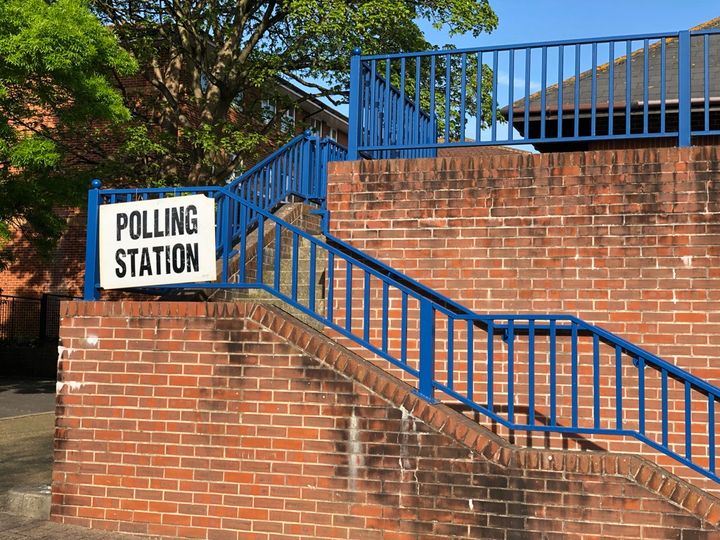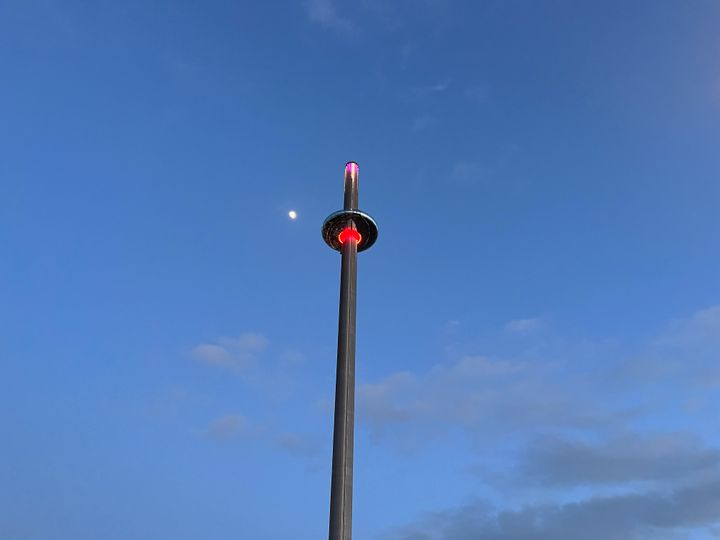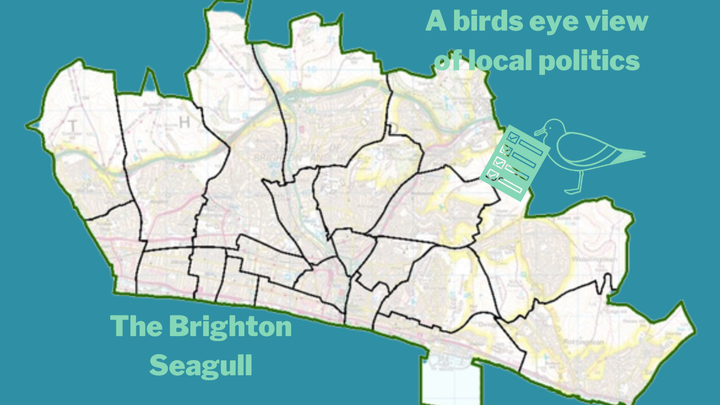How Did Brighton & Hove Labour Elect Two Councillors Who (Allegedly) Live In Leicester?
The Seagull digs into the murky goings-on with the recent councillor expulsions.

At the time of Labour's surprise landslide victory in May, we foresaw possible strife for the Labour Group: the scale of their victory meant the election of a more ideologically broad swathe of councillors than they may have anticipated. The events that unfolded over the last few weeks, however, have been decidedly murkier than factional squabbles. Councillors Bharti Gajjar (Kemptown) and Chandni Mistry (Queen’s Park) were suspended, then expelled, from the Labour Party. Between those events, Brighton & Hove News revealed that councillor Gajjar was sacked from a previous job for fraud and that they might both live not in Brighton, but in Leicester. (It's worth noting councillor Mistry has denied this to the Argus, claiming that she lives in the 'heart of Brighton'.) Both currently remain councillors, though they've faced calls from all parties to stand down. At this point you might very well ask how on earth did this happen? The Labour Party will likely be running the country within a year; how did they let something like this slip through the net?
When asking around the local party about councillors Gajjar and Mistry, words like 'mysterious' seem to come up. This rings some alarm bells, as most councillors tend to be active both in their party—having held local officer roles, or been an active campaigner—and in the community in other ways. To take some random examples from across the city's three main parties: Mohammed Asaduzzaman is the proprietor of the restaurant Mohammed Spice Of Life (a great shout for lunch if you're in the vicinity of the Open Market), Sue Shanks is a governor of Homewood College and Carol Theobald is president of Brighton & Hove Mencap. They each have very long lists of similar commitments and involvements from which we’ve taken one thing apiece, but you get the point: councillors tend to be quite embedded. 'Mysterious' is not a word you tend to hear—and yet these two were, as best we can determine, pretty much totally unknown locally prior to standing for candidacy. So why did nobody in the local party raise the alarm?
Usually, at the beginning of the year prior to council elections, the Labour Party undertakes an in-depth process to select candidates. Members will apply to be 'on the panel', at which point they get vetted by senior local party members. They then apply to individual branches (the party unit that organises in individual council wards) who hold shortlisting meetings to determine which candidates they will even consider talking to, then selection meetings where candidates are asked questions by the branch membership and selected on this basis. Under ideal circumstances, candidates are in place a year ahead of the election to give them time to do some doorknocking and build their profiles before campaigning begins in earnest.
In 2022, this was not the case. Labour’s South East regional office took direct control of the process—as a result, they said, of a number of previously elected councillors having been suspended from the party for social media posts, costing Labour their minority administration in 2020. Members were invited to apply to stand as councillors, but rather than applying to and being selected by the branches (which would allow them to choose in which ward they wanted to stand—and the ward's branch to choose whether they wanted them or not) they would be allocated to wards by the regional office.
This caused a great deal of frustration in the local party at the time, as members were understandably angry that their ability to vet the candidates, and exercise democratic control over the process, had been taken away. The regional office also took considerably longer to put together the slate of candidates than would normally be the case, with Labour's full slate only being announced in March 2023, a scant two months prior to the election. This made scrutiny—both internal and external—substantially more difficult. It's also possible that potential candidates may have been dissuaded from putting their names forward by the lack of control they would have over where they might end up standing, which led to candidates who may not otherwise have passed muster being selected to make up numbers.
You can see how, had the usual procedures been in place, some of this may have come to light sooner. As it was, according to Lloyd Russell-Moyle, Labour MP for Kemptown, they were only flagged when one of the councillors changed their listed address to one out of the city in September, after which questions were raised, the matter was escalated, and the whole affair came to light. Russell-Moyle told The Seagull that he's written to the police to request a fraud investigation be conducted. Misrepresenting yourself on election forms is illegal and could even carry jail time.
A source, speaking on condition of anonymity, laid the blame for the situation entirely at the feet of Labour's regional office in rather more forceful language:
Labour's South East Regional office are completely responsible for this mess. For factional reasons they took over the entire candidate selection process back in 2022. This denied local party members any democratic selection process for the council candidates. It also bypassed the public scrutiny that would normally occur. Region promised to undertake detailed background analysis on all the candidates put forward, but after repeated delays and the errors revealed here, it is clear they were incapable of this. If we see more candidates selected in this manner, it's only going to result in more problems down the line. The success that Brighton and Hove Labour achieved [in the] 2023 local elections was achieved in spite of regional office's meddling. They are a toxic influence and clearly have no respect for hard working members and volunteers that make up the Labour Party.
There are three big questions raised by this whole affair. The first is what exactly councillors Gajjar and Mistry hoped ultimately to gain from their election. The role of a councillor is seldom a lucrative or glorious one; the allowance of £13,359.60 per year is not nothing, but trains to Leicester aren't cheap and neither is petrol. Labour sources we've spoken to confess to similar levels of bafflement. The only possibility that makes any sense at all is that they were using the position of councillor as a stepping stone to a parliamentary seat.
Councillor Gajjar's website (now taken down, but preserved by The Internet Archive) seems to be setting her up for a parliamentary run in Morecambe & Lunesdale in Lancashire, with pictures seemingly entirely sourced from campaigning in Brighton (they prominently include the Pepper Pot and MPs Lloyd Russell-Moyle and Peter Kyle) and also claims at the bottom that councillor Gajjar is 'From South Derbyshire' (~125 miles from Morecambe). The website also claims her to be a fellow of the Royal Society of Arts (a prestigious institution, but one whose fellowship is open to anyone willing to pay £198 a year) and 'grounded in Ethics from Yale University', which, if true, perhaps speaks poorly of Yale's ethics curriculum. Councillor Mistry, meanwhile, stated in her recent comments to the Argus that she might have stood for MP in Brighton Pavilion had present circumstances not intervened. Both councillors have been approached for comment by the Seagull but have as of yet declined to do so.
The second question is one that the Labour Group may be asking themselves. Beyond the immediate embarrassment (and frustration for the many serious and hardworking councillors in the group), this situation should be extremely worrying for them. If councillors Gajjar and Mistry were able to be elected while living elsewhere (and according to local party sources, in the case of councillor Gajjar, submitting fake canvassing records), then it strongly suggests Labour's landslide in May—while certainly the result of many people's hard work—is due more to Green and Conservative weakness than Labour strength. How paper candidates were swept in on the wave? How rotten is the core of Brighton & Hove Labour's electoral wrecking ball?
The final question is one that affects all residents: given the council’s budget gap and the Citiclean report and increased food bank usage and all the many, many other challenges facing the council, how many councillors elected in May, even if they do live in the city, are not serious about representing their constituents and are just looking at the job as a step to higher office?




Comments ()